Grocery Update #15: A Rural Grocery Oasis
Also: Building The FTC’s Case Against High Grocery Prices
Discontents: 1. A Rural Grocery Oasis. 2. Seen In The Wild. 3. Building The FTC’s Case Against High Grocery Prices. 4. Tunes.
1. A Rural Grocery Oasis
I lived in Texas for the better part of 20 years. Crazy to say, that is almost as long as I lived in my birthplace of New York. Texas is a big state, more of a subcontinent. You get that sense when driving across it. Coming south down I-35 from Kansas and Oklahoma, east from Houston on I-10 or southwest from Arkansas via Texarkana, the rolling landscape slowly gets drier, rockier and sunnier. The sun feels that much closer in Texas, comforting in the spring, suffocating in the summer and early fall. Tall pine and broadleaf trees are replaced by broad Live Oaks and stunted, wily junipers and mesquite. Or driving east on I-10 from New Mexico, the highway drops into the Rio Grande Valley, running along an endless border wall, a harsh, linear violation of the desert horizon. A wall that hampers the mobility of people, but not capital. Over the hours, mountain ranges slowly unfold into the Balcones plateau and rolling hills of Austin. Yet there is so much more to The Nation State. The Panhandle, The Permian Basin, Bastrop and The Lost Pines, Lost Maples, Llano Estacado and The Great Escarpment, Houston, The Gulf Coast and Corpus, The Metroplex, San Antonio. Think you know Texas? Texas is just too damn big.
Traversing Texas by car is always a haul. You are looking at 4-6 hours depending on which direction. Driving to the East Coast means crawling up I-35 and then shooting due east from Dallas. Or a more rural hypotenuse that veers northeast at Waco, up through low hills and narrow two lane roads via Corsicana, Athens, Tyler and Longview, finally exiting the Lone Star state near Shreveport, Louisiana, where I always stop at the Whole Foods for a seltzer, an apple or peach, some chips and a bathroom break. It is not the most scenic route, but it is raw and real. Mobile home parks dot the landscape in between vast ranchlands, punctuated with manufacturing and processing facilities and fenced off, private game parks. Tyler reminds me of Binghamton in the Southern Tier of New York, maybe less post-industrial but still a tad busted up. Longview could be Sulphur Springs or Brenham or Nacogdoches, gritty and sunbaked but still friendly and deeply Southern. Texas is still in the Black Belt, the rural workforce heavily Mexican and Central American, even in majority white counties. You get a sense of the vibe in the convenience stores, gas stations and grocery stores along the way. The self-mythologizing of Texas as some monster-truck driving, Punisher skull’d, gun-toting warrior culture fades away behind the friendly smiles, polite waves and warm manners of the people that actually live here.
I always feel welcome on the road in Texas.
Like many hundreds of working class communities, the swathe of Texas along State Road 31 between Waco and Tyler is dominated by dollar stores. Makes sense. The median household income in the area is under $59,000 a year, well under the Texas average at $74,000 or so. Poverty rate around 15%. Oil, gas, metal fabrication, plastics and rubber manufacturing, some farming, ranching jobs. Resource extraction. Rural America.
On one trip, to the chagrin of my wife, I started counting the dollar stores as we passed them. At least a dozen between Tyler and Waco. Family Dollar, Dollar Tree and the ubiquitous Dollar Generals. There were few other grocery options.
On my second or third long haul trip via State Road 31, I noticed a couple Brookshire’s grocery stores here and there, across the street from a dollar store or down the street from some weathered old IGA. Brookshire’s is a Texas institution, nearly a hundred years old, with over 200 stores across multiple banners and market segments. Unless you are from the deep south or are traveling deep in the south, you probably have not heard of them. (And not to be confused with Brookshire Brothers, an employee owned chain from whom they split in 1939.)
I had neutral expectations when walking in to this Brookshire’s. Road trips are fun, and way better than flying, but still exhausting. I didn’t want my stiff back and road bleary eyes to color my impression, especially since there weren’t too many other grocery options. I needed some fresh fruit or veggies to munch on and not just the same stale chips and nuts from Buc-ee’s.
But maybe that’s why Brookshire’s wildly exceeded my expectations.
My first impressions, walking in from the 99 degree Texas summer swelter, were the cool breeze of pressurized air conditioning and modestly bright lighting, as well as how sweet the store smelled. Foul smells in a grocery store are always a red flag. Rotten meat juices seeping into floor tiles, moldy produce coolers, years old curdled milk lining the dairy case. Not at this Brookshire’s. It smelled welcoming, floral, even rejuvenating, like an oasis in the dollar store desert. Definitely not what I expected.
Upon entry, a stack of locally baked pies and pastries, flanked a bright pallet-drop display of SunnyD (fitting that a display of liquid candy should be such eye candy). Frito Lay chips and Gatorade held down the prime endcap. This was Frito/Pepsico DSD territory, obviously. The produce case was bright, fully stocked with half a dozen varieties each of apples, pears, melons and stonefruit, including locally grown peaches for $1.29 a pound. The bagged and packaged salads were fully stocked, fresh, well rotated and plentiful. There were organic fruits and vegetables merchandised liberally throughout, with occasional signage callouts. The bananas were on the cusp of ripeness, with the set also featuring dragonfruit, pineapples, mangos and other tropical fruits, probably shipped in from Houston. The pepper display was impressive, with jalapenos, serranos, poblanos, plus dried arboles, guajillos, as well as nopales and tomatillos, because this is Texas, y’all.
The center store category merchandising was typical of independent grocery chain assortment planning.
Not original, but surely effective. Key placement of mainstream national brands? Oreos, Triscuit, Cheez-its, Pringles, Campbell’s, Kraft blue box. Check. Visible, even expansive presence of local or niche items, particularly in more specialized categories like condiments, marinades and barbecue sauces (this is still Texas, y’all). Check. And heavy placement of private label, including multiple value priced tiers. Definitely check.
In the milk set, Brookshire’s store brand gallons were a bit pricey at $4.19, but they had a tighter value tier with the That’s Smart label at $3.69. The twin lining of value tiers continued throughout the store, with Brookshire’s label tag teaming That’s Smart in canned vegetables and other sets, while other TopCo brands such as Full Circle stood out in nut butters. Brookshire’s is prime TopCo territory, the $18 billion member-owned private label and retail services provider thriving in this independent setting, with enough stores and store volumes to ensure steady supply, low logistics costs and low retail prices. Enough to keep the dollar stores at bay.
There was an impressive #10 can set of beans, hominy, nacho sauce, corn and chili, for those campouts, cookouts, maybe as ingredients for local restaurants. Packaged cheese was Brookshire’s brand, alongside the usual Kraft and Tillamook mass market slices and shreds. Pickles were dominated by Mt. Olive, a superior choice to Vlasic or B&G any day (especially the kosher dills). Canned meat was also still a thing here on State Road 31, with a full 4 foot set of Dinty Moore, Spam, Armour and Libby’s. Plenty of cheap, calorie dense odds and ends from all that factory farmed meat processing, a step or two up from the trim destined for pet food, salted heavily with MSG and Disodium Guanylate. Not my thing, but who am I to judge?
Likewise, breaded shrimp and Louisiana farm raised catfish nuggets and catfish strips in the freezer bunkers, in 2.5 lb., 4 lb. and larger sizes, enough greasy, protein rich, industrially harvested seafood fun for the whole family. Fresh meat and poultry sets were clean, bright, well rotated, with no off-putting smells. No blood smears or chicken juice on the packages. Everything stacked tight and neat, by cut, by species, by portion, by size and format, from ground beef bricks to value sized loins, thighs and wings. The coolers were at temp and stocked full. These should be baseline expectations, but it is nice when they are exceeded. No, not a lot of organic or pasture-raised options. This was factory farm country, not even a closet-sized Natural Grocers for over a hundred miles.
Across the store, the prices were fair and there were plenty of options across all purchase occasions and price tiers.
Industrial agriculture’s promises were always abundance, convenience, and cheapness. This seemed fulfilled at Brookshire’s. A rare occurrence in an age of profit-driven price inflation, erratic supply chains and pandemic and climate-related shocks.
Brookshire’s success is also it’s context.
Would Brookshire’s thrive in Austin or Dallas? In New York or Philly? They are not boring like Randall’s. Not mid like Sprouts. Not preachy and frequently out of stocked like Whole Foods (Oh boy do I have pictures). But neither do they play at that brutal Walmart, HEB or Kroger level of market dominance. They are more humble, “proud to be your hometown grocer”, even if they do have 200-odd stores across the state. This brand of retail execution must be born of hard work, but also love. The rural challenges are harsh, in the form of poverty, vast distances, foul weather, and dollar stores. For a chain like Brookshire’s to thrive in this setting, they need to be a retail destination that is also a good neighbor, giving people what they need and want. There is a high level of public service involved in such rural retail. Executing well, with a clean, well-lit, well-stocked, well-rotated store, needs to be a more long-term, even humane business model than your typical short term profiteering, via the publicly traded, private equity funded retail cost-cutting melee.
Grocery stores have a $1 trillion monopoly on fresh and packaged food allocation.
I have seen (and will write about) when grocery stores don’t take this public responsibility seriously. When they present a gutted, broken-down, unsafe, poorly-lit, overpriced, poorly merchandised, poorly stocked/rotated grocery assortment, especially to a low-income, working poor community, it is an insult to our humanity.
Brookshire’s takes the opposite tact. They run a big, bright, clean store with a full assortment, as good as any in the Global North’s industrial food system, with national packaged food brands, private label value options, fresh produce, meat and dairy, even some organic options shipped in from far away. Agroecological or regenerative? Hardly. That would require a whole new business model and customer engagement strategy alongside structural changes to pricing, production and supply chains far beyond the influence of a regional grocery chain. But crazier things happen.
In the meantime, Brookshire’s is serving and feeding a community living, even thriving, in the adverse circumstances of an extractive rural economy.
The grocery store as a profitable public good, far away from major metro areas. And a welcome reprieve for this weary traveler slowly traversing the vast Texas heartland, temporarily satiated with a resealable package of hardboiled eggs, a couple of crisp apples and a bottle of lime seltzer. Truly an oasis in the dollar store desert.
2. Seen In The Wild
Buc-ee’s, pandering to zoomers. No further notes.
Vibe check. This cheddar cheese is windswept, wearing a wool cardigan, smoking a cob pipe, with a salt and pepper 5 o’clock shadow at 9 AM.
3. Building The FTC Case Against High Grocery Prices: A Reading List
“Chair Khan announced that she will ask the Commission to launch an inquiry into grocery prices in order to probe the tactics that big grocery chains use to hike prices and extract profits from everyday Americans at the checkout counter.”
If you need to understand how the grocery/CPG industry exploited pandemic-related supply shocks to raise prices and reap enormous profits for shareholders here are a series of Forbes articles I wrote from 2021-2024 outlining it all in Excruciating Detail (P.S., if anyone wants to publish this all as a book, hit me up).
Background on supply chain shocks (pre-inflation). August 2021.
Inflation was not inevitable. January 2022. I was correct. Alas.
Where do grocery prices come from (the villain’s origin story). January 2022.
How windfall profits were supercharging food inflation. May 2022. FFS, I wrote this in MAY of 2022!
How profit inflation made your groceries so damn expensive. September 2022. Forbes let me write a swear word!
Why the Federal Reserve couldn’t solve food inflation. December 2022. Damn, I wish I was wrong.
How to make groceries affordable again. October 2023. A positive spin. Too bad no one really read this one.
Why your groceries are still so expensive. February 2024. This felt repetitive, but was my final and most widely read piece on the subject, with the most detailed data.
In related news, a group of senators are clueing in to how grocers may use electronic shelf (ESL) tags to implement surge pricing. ESL’s also reduce labor costs of hanging shelf tags, so it is a win-win for grocery P&L’s. Lose-lose for the staff and customers. Stay tuned.
4. Tunes.
Texas birthed many iconic punk bands, from the Dicks, to D.R.I., MDC and the Butthole Surfers. Big Boys’ singer Randy “Biscuit” Turner used to live around the corner from my rental in Zilker, way before all those poorly insulated, lead-painted bungalows started selling for a zillion dollars or got bulldozed to make way for ugly McMansions housing all the Nu-money Musk-wannabe tech execs. RIP Biscuit.
peace.





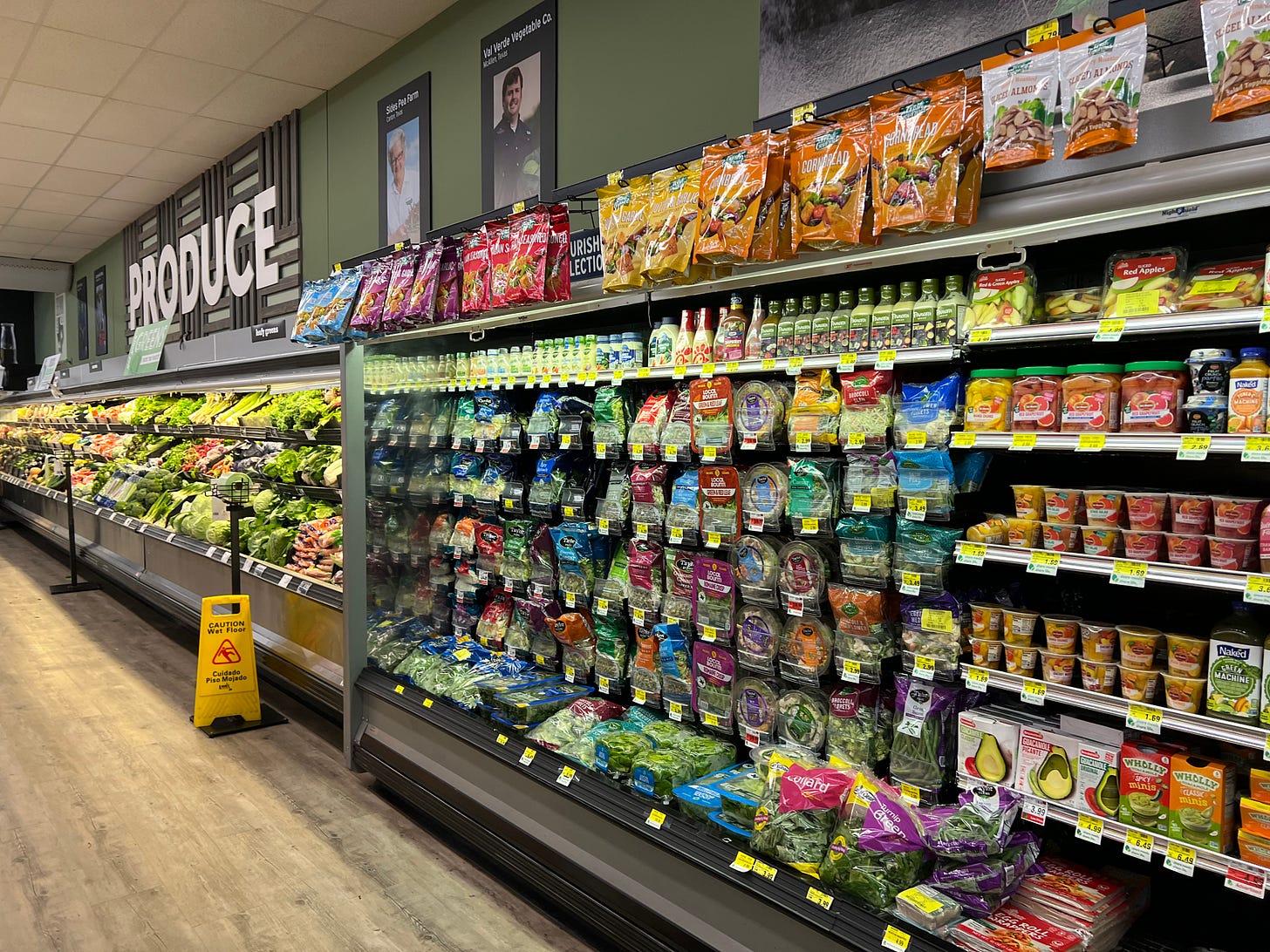
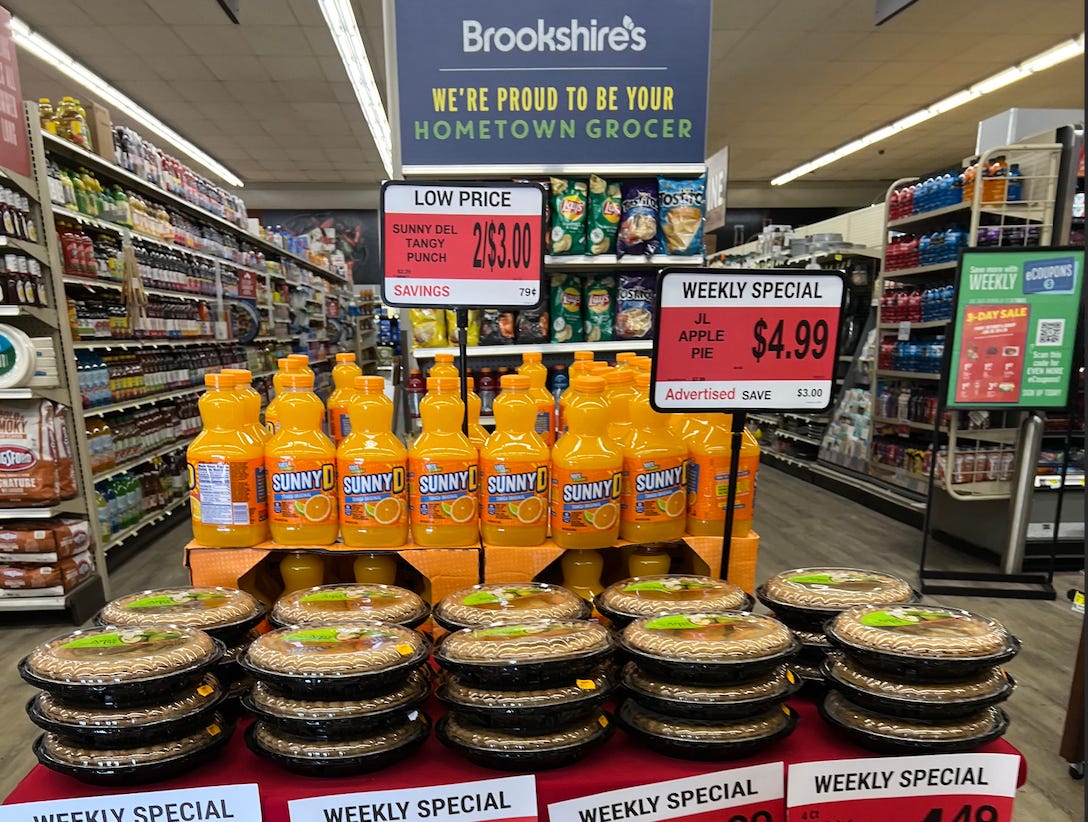

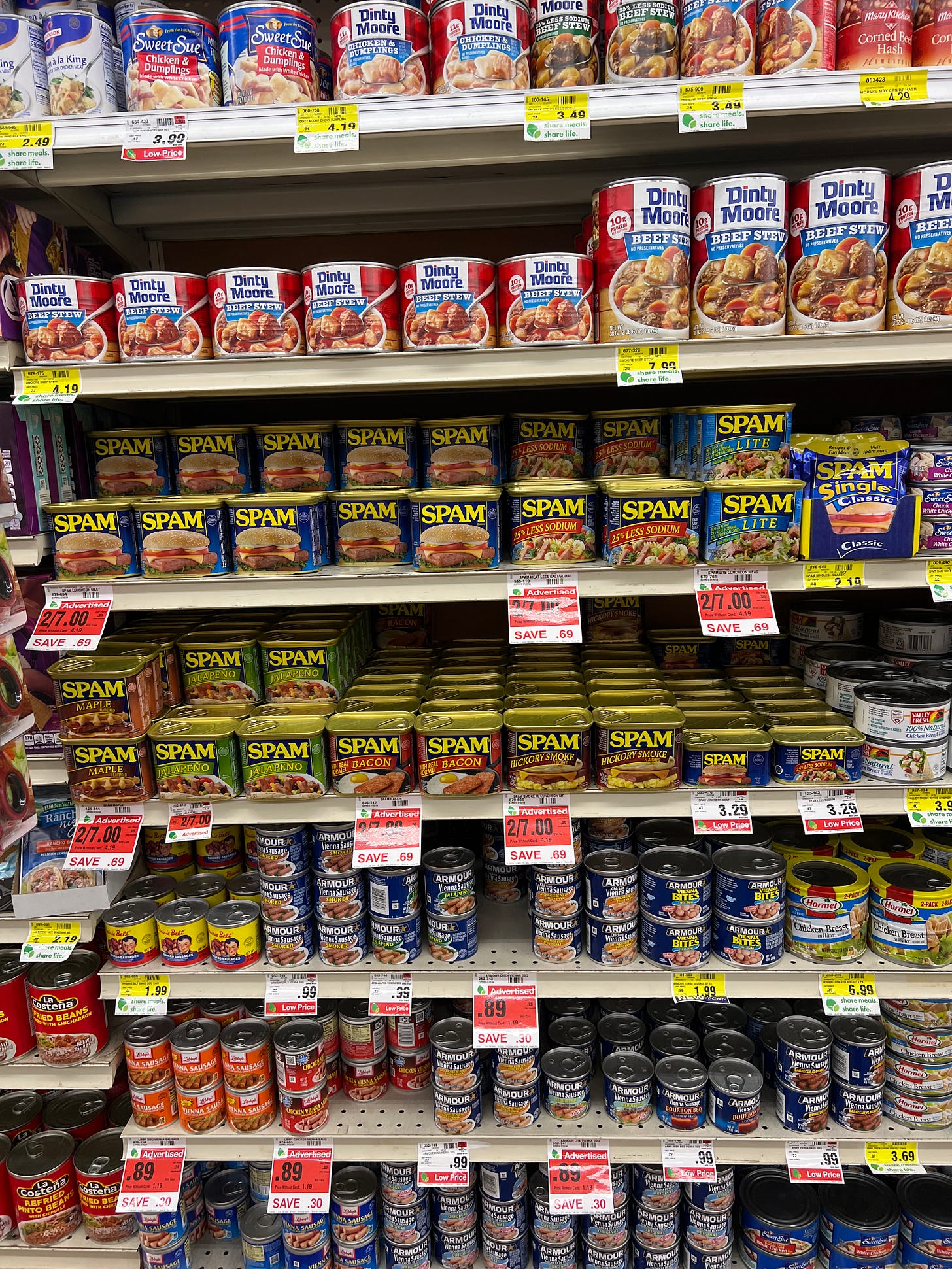
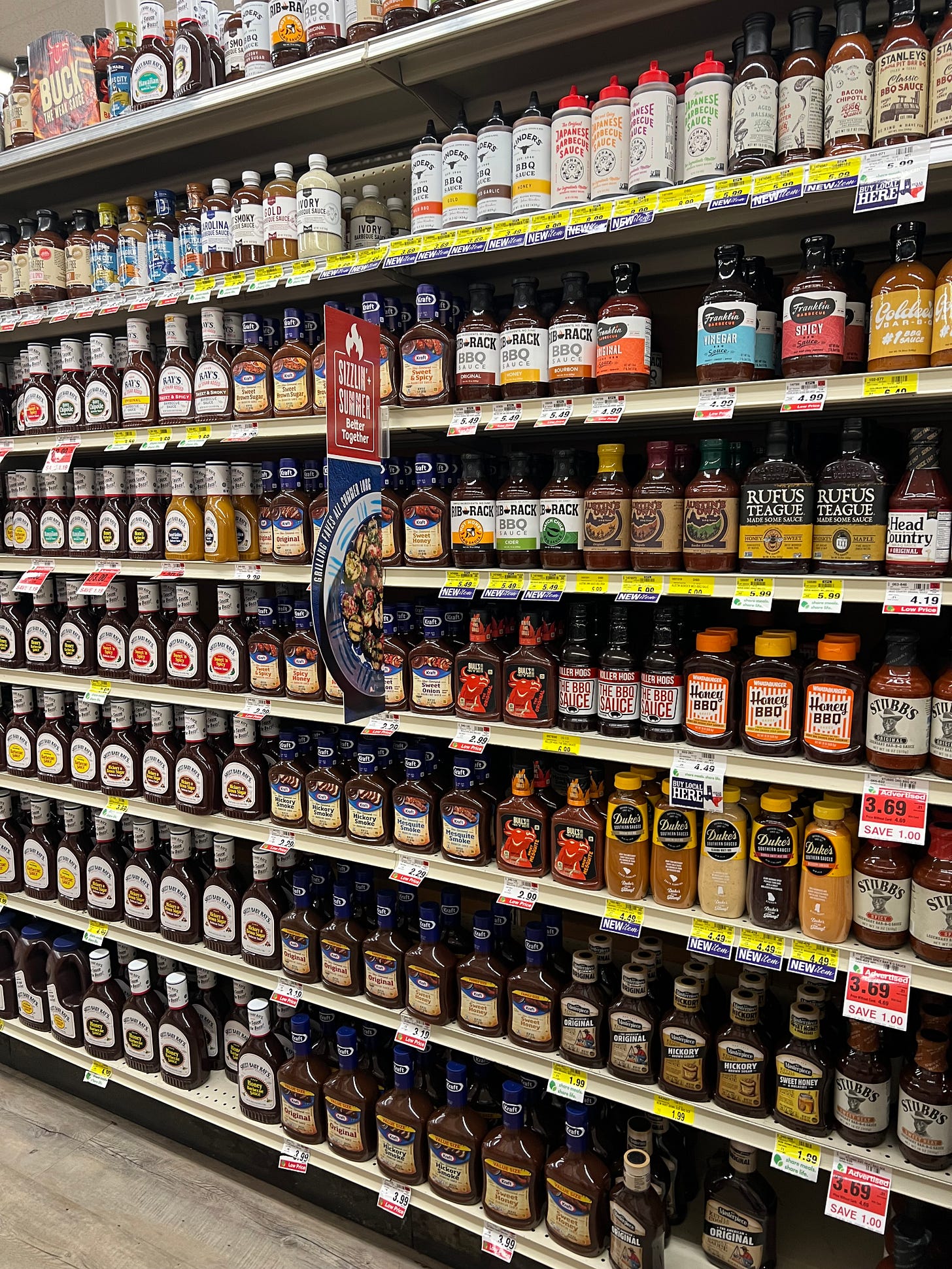

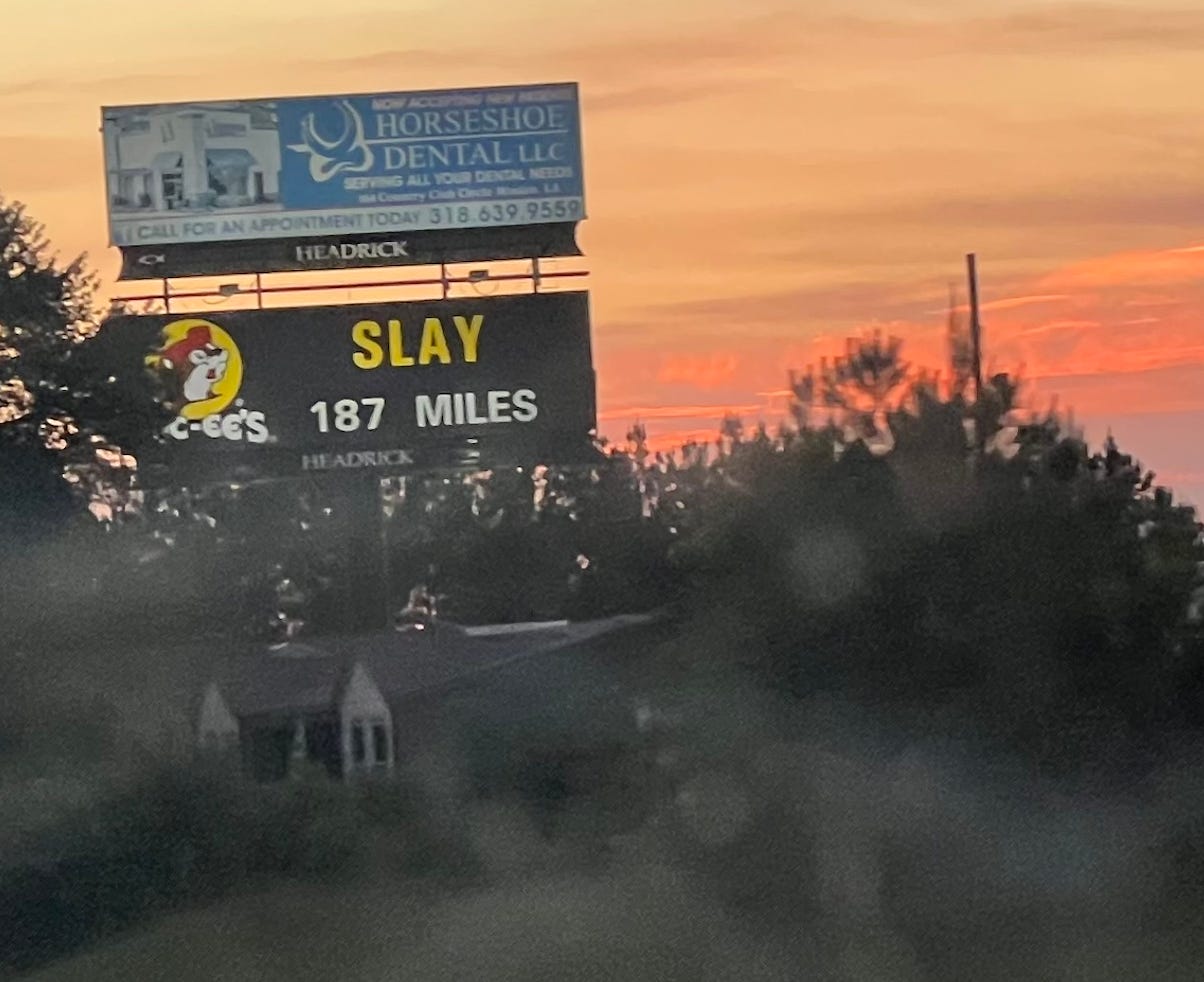

Great exposition on Brookshire’s. And even better focus on the community responsibilities of grocers. Glad to hear Brookshire is living up to it. I always had the same feeling about Fareway in Iowa. Rural, and excellent, and tied to the community. Don’t know if they’re still that way but they were back when I was still calling on chain buyers.
❤️✊🏽